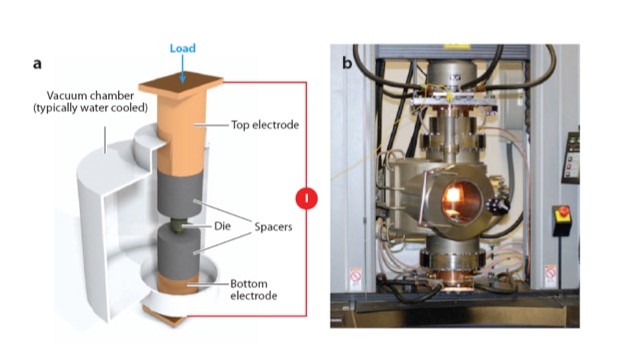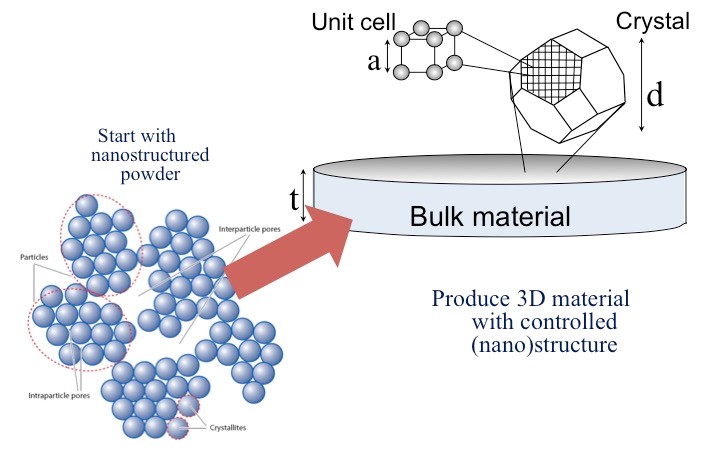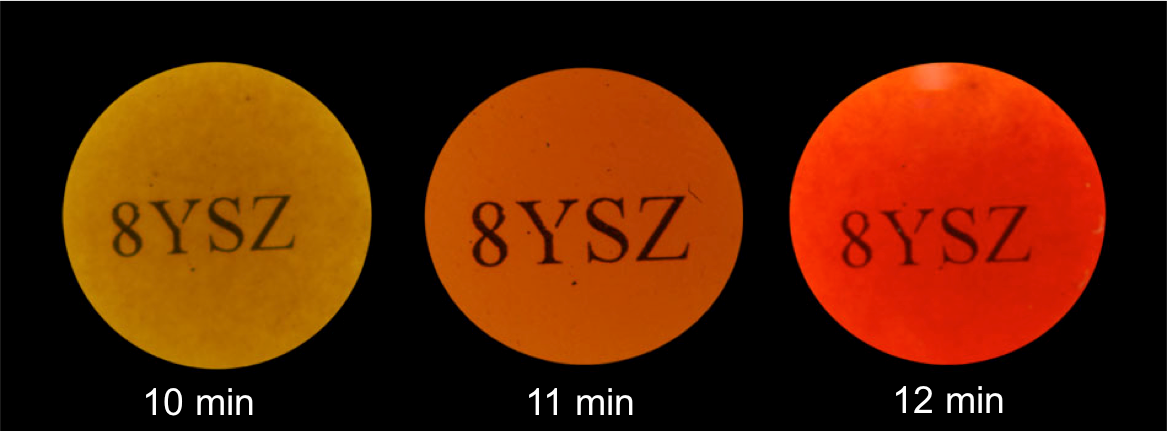UCR: Javier Garay (lead) with Masa Rao; CICESE: Santiago Camacho-López — Thrust 1
This thrust will focus on advancing the fabrication of transparent nc-YSZ cranial implants via the development of new materials and manufacturing capabilities. In doing so, this thrust will leverage the successes of our earlier studies, exploit advances made in the other thrusts, and develop new understanding and technological capabilities that will service a number of the other thrusts. It will also provide collateral scientific and technological advances that will have potential for impact well beyond the scope of the SOMBRERO effort. In our earlier studies, we demonstrated transparent nc-YSZ cranial implants, for the first time, and evidence of their promise for minimally-invasive optical interrogation of the brain. These novel implants were produced using current-activated pressure-assisted densification (CAPAD), a novel processing technique that relies upon simultaneous application of high mechanical pressure and large electric current, the latter being the uniquely distinguishing feature. The current serves as the sole source of heating, for high heating and cooling rates and uniform temperature, which when coupled with the increased surface energy driving force produced by pressure, allows rapid densification of nc materials to full density at temperatures far below more conventional bulk densification techniques (e.g., free or liquid-phase sintering, hot & cold isostatic pressing, etc.).
The concomitant reduction of internal porosity to nanometric dimensions minimizes the contribution of such defects to optical scattering, thus allowing realization of transparency in otherwise opaque polycrystalline ceramics. CAPAD also preserves nc and other non-equilibrium microstructures that are impossible to maintain using conventional techniques. As such, CAPAD represents a unique and fundamentally-enabling technology for realization of transparent bulk nc ceramics. Scientific/technological challenges: Despite our success in the realization of novel transparent nc-YSZ cranial implants, two significant challenges remain for implant fabrication. First Challenge: Although the material used for the original implants, 8 mole% YSZ (8YSZ), possesses greater toughness than conventional transparent materials, such as glass and acrylic (KIc = 3 MPa∙m1/2 vs. < 1.5 MPa∙m1/2, respectively), even better implant reliability could be achieved with use of tougher variants, such as 3YSZ (KIc = 8 MPa∙m1/2). However, realization of similar degrees of transparency in 3YSZ is not currently possible. This is due to the optical scattering produced by the relatively large birefringence of its anisotropic tetragonal crystal structure (in contrast to the symmetric cubic structure of 8YSZ). Minimization of such scattering is predicted for grain sizes < 50 nm. However, achievement of such fine microstructures has been stymied thus far by the relatively large crystallite sizes of commercial 3YSZ powders (50 nm), as well the inescapable grain growth that occurs during conventional densification.
Second Challenge: Many envisioned WttB applications will require non-planar (e.g., native cranial curvature) implant form factors. Moreover, implant performance may be improved via precise control of surface topography at even smaller length scales. Examples include: a) micrometer-scale recesses to facilitate optical fiber fixation; b) rationally designed topography at the nanoscale to modulate cellular responses to the implant; and c) nano-scale surface gratings to improve capture of scattered light. However, realization of such multi-scale manufacturing capability in nc-YSZ is not currently possible due to the difficulty in machining of dense nc-YSZ, particularly at the micro- and nano-scales (due to its high bond strength and minimal large-scale plastic deformation capability). Scientific/technological goals: This thrust addresses these manufacturing challenges by exploiting advances made in the nanopowder synthesis effort, as well as developing CAPAD-based multi-scale net-shape forming of nc-YSZ implants (Thrust 1). As discussed earlier, the latter will service a number of other thrusts within SOMBRERO, including fiber coupling (Thrust 3), biocompatibility and optical imaging (Thrust 4). Proposed approach: Improving the transparency of tougher nc-3YSZ materials will focus on the processing science required to densify the novel nanopowders produced in Thrust 1. The unprecedented control afforded by spray pyrolysis synthesis will allow production of 3YSZ powders with diameters as small as a few nm, as well as extremely tight size distribution, both of which are expected to allow realization of fully-dense bodies with grain sizes well below the 50 nm scattering threshold. However, significant efforts will be required to develop handling, compaction, and densification process parameters due to their diminutive size relative to conventional powders. As such, parallel effort will focus on optimizing CAPAD to allow densification of existing commercial 3YSZ powders with minimal grain growth to maximize the transparency that can be achieved with such powders. We have already demonstrated novel multi-step CAPAD processes that allow full densification of commercial 8YSZ powders with remarkably little grain growth (i.e., 55 nm final grain size from 50 nm starting powder crystallite size). These earlier studies will inform our proposed efforts to optimize the densification of 3YSZ powders for maximum transparency. Co-PI Garay has deep expertise in CAPAD and has pioneered its development for emerging applications, including transparent, magnetic, optical, and other functional ceramics. As illustrated in Fig. 4, efforts to develop CAPAD-based multi-scale net-shape forming will focus on use of shaped mold inserts, an approach which has yet to be explored. Mold insert materials to be explored will generally be those that are most compatible with CAPAD processing of nc-YSZ, i.e. those that are closely CTE-matched to YSZ (10.5 x 10-6 K-1), sufficiently refractory (melting point >> 1,200 °C), and non-reacting in highly reducing environments. As an example, taking inspiration from gas turbine engines, refractory metals such as Ni and Pt are promising, due to their demonstrated compatibility with YSZ in similarly hostile environments. At the meso-scale, conventional machining techniques (e.g., CNC machining) can produce shaped inserts from Ni plate with features as small as 100 μm. Beneath this, a variety of micro/nanofabrication techniques will be used. For example, lithographic patterning and physical vapor deposition (PVD) will allow creation of micro/nano-scale Ni (or Pt) patterns on polished Ni foil substrates with features of ~ 50 nm. This effort will benefit from the nanopowders developed in Thrust 1 which are expected to enhance molding fidelity and surface finish. Beyond technological capability, this effort allows fundamental studies of the effects of non-uniform stress and electrical fields on microstructural evolution during CAPAD, potentially opening new avenues that exploit such non-uniformity. Co-PI Rao has extensive experience in the development of novel micro/nanofabrication techniques, and previously made seminal contributions in the area of ceramic processing.




Leave a Reply